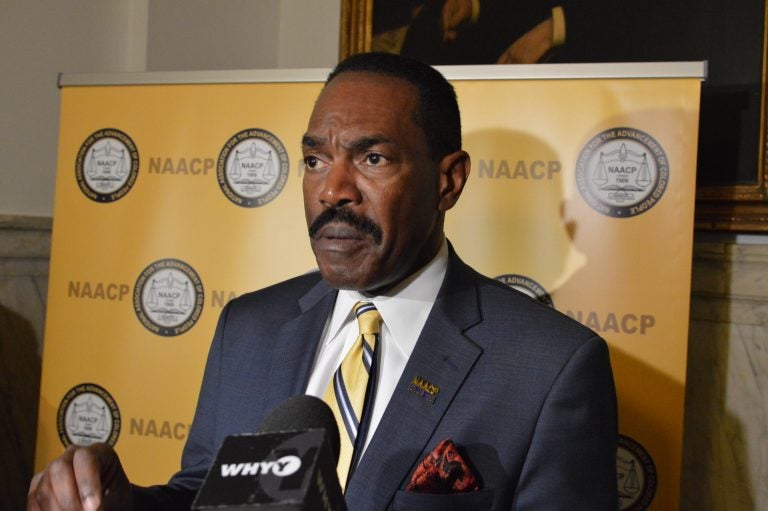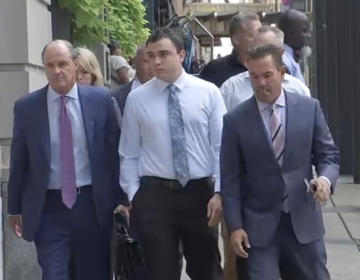NAACP demands equal justice in building collapse case

Philadelphia head of the NAACP Rodney Muhammad speaks at City Hall. (Tom MacDonald/WHYY)
The Philadelphia NAACP said it wants the black contractor involved in the 2013 fatal Center City building collapse to receive the same treatment as the white engineer who was at the controls when an Amtrak train derailed killing eight people in Philadelphia.
Minister Rodney Muhammad, head of the Philadelphia NAACP said he can’t believe a judge dismissed charges against the Amtrak engineer this week, while the contractor involved in the building collapse is in prison.
“In truth, this man driving that train 108 miles an hour round that curve could have killed himself,” he said. “Equally so in 2013 when that wall collapse, Griffin Campbell could have died in that wall collapse, but yet he was found with criminal charges against him, he was convicted and put in Jail.”
Campbell, the contractor hired to demolish the building adjacent to the Salvation Army thrift store was sentenced to 15 to 30 years in prison after being convicted of involuntary manslaughter, aggravated assault and related offenses. The developer of the project who hired Campbell was not charged.
Sean Benschop, an excavator operator working for Campbell, pleaded guilty and is serving seven and a half to 15 years.
William Hobson, Campbell’s attorney, said his client has been in prison for four years for what should have been considered an accident.
“He’s white male, he’s a train conductor, not one day in jail, no loss of freedom, no criminal charges, in a nutshell, that’s white justice versus black justice,” Hobson said.
This week, Judge Thomas Gehret dismissed charges against Amtrak engineer Brandon Bostian. Gehret said that based on the evidence offered by prosecutors, he feels it is “more likely an accident than criminal negligence.” Bostian told investigators he grew confused about where he was along the line and started accelerating the train because he thought he had passed two curved areas and was headed into a straight-away. The train was going twice the speed limit when it derailed in May, 2015.
The NAACP says it will take Campbell’s case to the U.S. Supreme Court if necessary.
WHYY is your source for fact-based, in-depth journalism and information. As a nonprofit organization, we rely on financial support from readers like you. Please give today.




